Golf Cart GPS: The Ultimate Guide to Breaking 90 in Golf
While golf cart GPS and smart golf technology continue to change the golfing landscape, the desire to break 90 on the course has remained the same. Breaking 90 is often seen as a significant milestone for golfers. Once you break 90, it is a clear indication that you’ve reached a level of control, consistency, and skill that separates you from most casual players.
Golf is about more than just power or hitting one great shot; it’s about limiting mistakes, making smart decisions, and turning potentially bad holes into something manageable. With the right mindset, an informed approach to practice, and a focus on course management, almost any golfer can hit this milestone.
In this article, we provide a full guide covering how to break 90 in golf, highlighting key course management strategies, practice routines, mindset tips, and equipment considerations. We’ll also cover how Tagmarshal’s golf cart GPS can assist with effective course management and practice.
Golf Cart GPS: Why Breaking 90 Matters

The significance of breaking 90 lies in the fact that it serves as a benchmark separating casual players from the more skilled amateurs. This milestone is essentially proof that you’ve developed beyond just flashes of good play and achieved a level of consistency.
Breaking 90 means you can put together 18 holes without letting mistakes derail your performance as a whole. You’ve learnt to avoid triple bogeys, recover from misses, and keep the ball in play. This is a sign of control, skill, and discipline, not luck.
Beyond this, you can begin to see yourself as an above-average player, which can do wonders for your confidence. Statistically, most golfers never break 90 consistently. Breaking 90 is also a great sign of balance in your game, serving as proof that you have a well-rounded foundation.
Once you hit this goal, new goals are possible, as this is merely a stepping stone to even better performances on the course. Each milestone builds on the previous one, and the more you realise that you’re capable of further improvement, the more milestones you’re likely to achieve. Suddenly, 85 doesn’t seem so far away, and next, you may even push to break 80 on a consistent basis, which would place you in the realm of highly skilled amateurs.
Breaking 90 is the first major sign that you’re playing smarter and improving on your technical skills, and the game becomes more about strategy than frustration.
Golf Cart GPS: Course Management Basics
As a golfer, mastering course management is a key step to breaking 90. A huge misconception in golf is that you have to hit towering drives consistently and look to display flashes of brilliance. The truth is that, for the most part, high scores are a result of poor decision-making rather than poor swings. Here are some key ways to improve your course management:

Aim For Bogey, Not Birdie
When looking to break 90, you don’t need heroics; you just need to be smart. On a par 72 course, 17 bogeys and 1 par gets you an 89. Hit shots you know you can execute, and focus on keeping the ball in play. For example, aim for the fat side of the green instead of tucked pins.
Eliminate Double And Triple Bogeys
The quickest way to balloon your score is by carding blow-up holes. This can often happen when you try to recover from an overly aggressive shot that led to a mistake. For example, let’s imagine you slice your drive into the trees and instead of punching out, you look to thread a low 3-wood through a small gap. Most of the time, this is not going to work and will end up costing you strokes. The smarter move is to punch out safely and trust that your short game can limit the damage.
Know Your Weaknesses
All golfers have their tendencies. When you understand your weaknesses, you can build your course strategy around that knowledge. Playing to your tendencies will help reduce big mistakes and build confidence. For example, if you tend to fade, aim down the left side of the fairway so that your ball works its way back into play.
Manage Risk
On any golf course, there are hazards such as water, bunkers, and out-of-bounds markers. Whenever you take a shot, you should weigh the risk. Ask yourself if clearing the water is worth the penalty in case you miss. When trying to break 90, sometimes the safe shot sets you up for an easier next shot. The smart move is to think of hazards as areas to avoid at all costs.
Track Your Stats
In modern-day golf, there are tools for tracking stats that can be hugely beneficial to your game. Golf cart GPS systems, such as Tagmarshal, often have player profiles with AI-driven data that can be used to deepen your understanding of your game. Additionally, you can make notes of specific weaknesses in your game that you need to work on, as this can help you refine your overall course strategy.
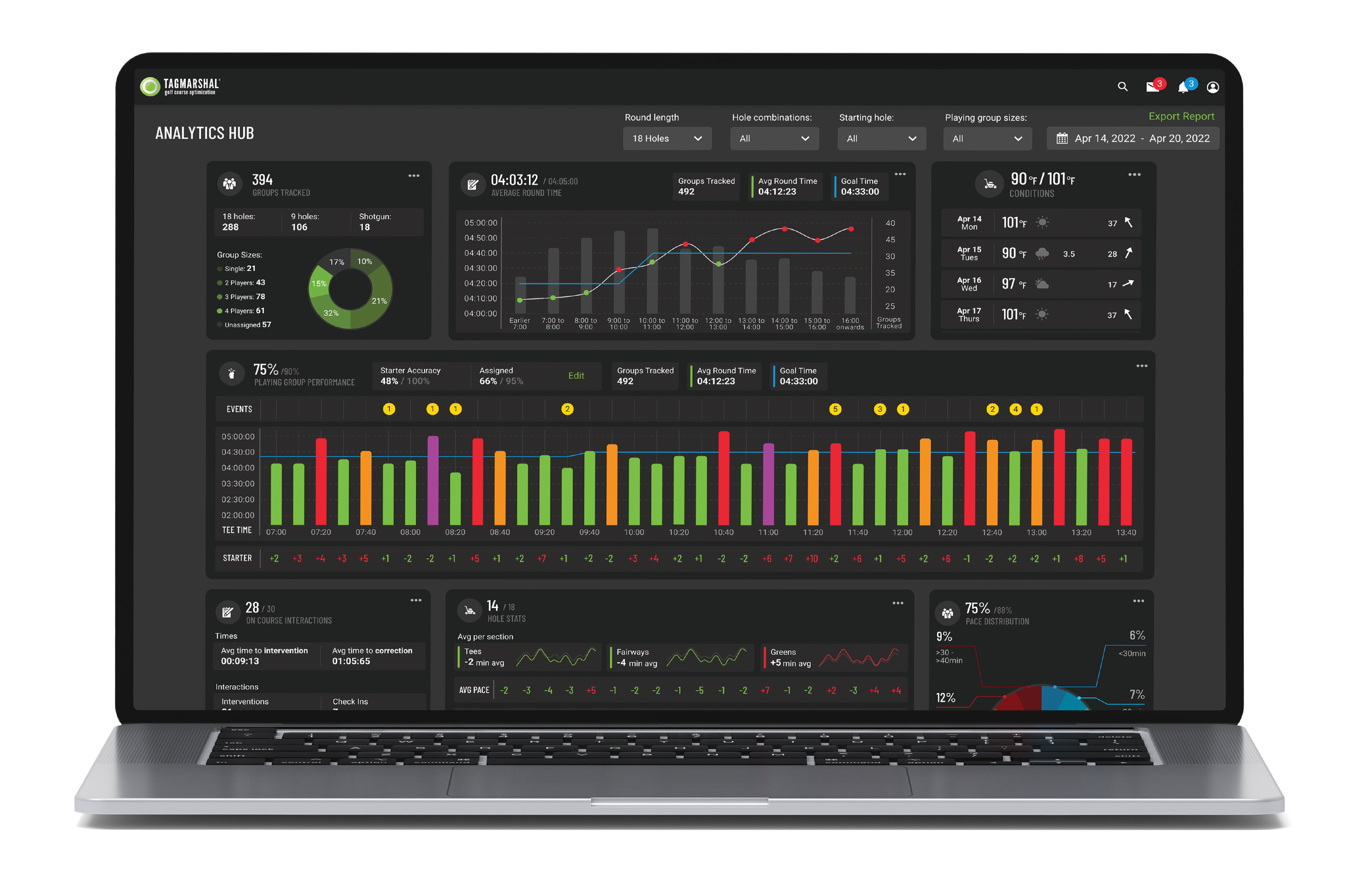
Practice Routines That Work
You can’t just expect to break 90. While achievable to almost any golfer, it doesn’t magically happen, and you’ll have to put the effort in to improve on your game. Consider the following practice routines and tips:
Tighten Your Short Game
Often, people start golfing under the impression that distance is going to be the key to getting great scores, but the importance of your short game should never be overlooked. Start focusing on shots 100 yards and in, as this is where more than half your shots are going to take place. You can improve your short game by practicing putting drills, bunker shots, and chipping. Improving your short game results can quickly translate to full-size courses.
Purpose-Driven Range Sessions
If you’re practicing your range shots, don’t just aimlessly hit balls. Structure these practice sessions like a round of golf. Warm up with wedges to dial in feel, aim to hit specific targets with your irons as if you’re on the course, and focus on accuracy over distance with drivers and fairway woods. Add in random changes, such as switching clubs often, to simulate real-course decision-making.
Create A Weekly Plan

Perhaps the most important piece of advice we can offer; build a schedule and stick to it. A schedule doesn’t have to mean hours of practice every day; two or three focused sessions a week can make a major difference when you’re consistent. Don’t just expect immediate results; give yourself time to get better. The more you stick to a routine of regular practice, the higher the chances are of you breaking 90.
Simulate Course Pressure
When you’re on the golf course, there’s an added layer of pressure when compared to practice. As such, try simulating pressure while you’re working on your game. For example, play games with yourself by setting targets like hitting 25 putts in a hole in a row, restarting whenever you fail. You can also set scoring goals for chipping drills, or even give yourself time limits.
Mental Game & Mindset
As is the case with any sport, your mentality is as important as your skill. Your mental game can be the difference between being a casual player and a highly skilled amateur. In golf, mindset is a critical part of achieving the breaking-90 milestone.
First and foremost, stay calm. A bad hole should not derail your whole experience, but letting frustration get the best of you can quickly lead to a much worse end to the round. Whenever something goes wrong, remember that everyone makes mistakes, but the ones who improve the quickest don’t let these mistakes ruin a whole round.
Another major tip: set realistic expectations. Understand where your skill level is at and don’t set targets that are impossible to reach in a reasonable timeframe. Chasing perfection leads to unrealistic pressure. It’s better to focus on limiting mistakes rather than playing perfect golf.
You should also develop a pre-shot routine, as consistency begins before you swing. Something as simple as taking a breath, visualizing the shot, setting your alignment, and committing can do wonders for blocking out distractions and building momentum. By repeating it the same way, your body will know what to do automatically, and you’ll be calmer when hitting shots.
Equipment Considerations
In addition to all of the above, the right equipment can also give you that extra edge needed to break 90. This doesn’t mean you have to spend thousands of dollars to buy the most expensive equipment on the market, but rather find gear that matches your swing and helps minimize mistakes.
Forgiving clubs, like game-improving irons and hybrids, tend to make things easier than using old-blade-style irons. A modern set of clubs is designed with larger sweet spots, which means off-center hits still travel far and straight. When trying to break 90, don’t make the game harder than it needs to be.
The best tip we can offer is to get properly fitted. Even just a basic fitting for shaft flex, lie angle, and grip size can greatly improve consistency. A properly fit set means you can swing naturally and seamlessly without needing to compensate for a mismatch.
In the modern game, golf cart GPS systems are also an important piece of equipment. You can use a golf cart GPS to make smarter decisions while on the course, particularly in terms of shot and club selection. We’ll take a deeper look at how golf cart GPS can help in the section below.
While the right equipment can make things a little easier, keep in mind that it’s no replacement for the fundamentals. You can learn more about choosing the right equipment here.
Tagmarshal’s Golf Cart GPS
Tagmarshal is the industry leader in golf course optimization, offering courses full, real-time operational oversight and reporting features. Golf operators use Tagmarshal to improve the player experience as a whole, and players can use Tagmarshal’s golf cart GPS to improve course management. Here are some of the ways that Tagmarshal can help players:
2Way Screens: The 2Way cart and mobile screens come with an ultra-high resolution display and brightness. They show players their pace to goal times as well as to-the-pin yardage on each shot. Players also get weather warnings, pace and geofence alerts, and can even make food and beverage orders on the go.
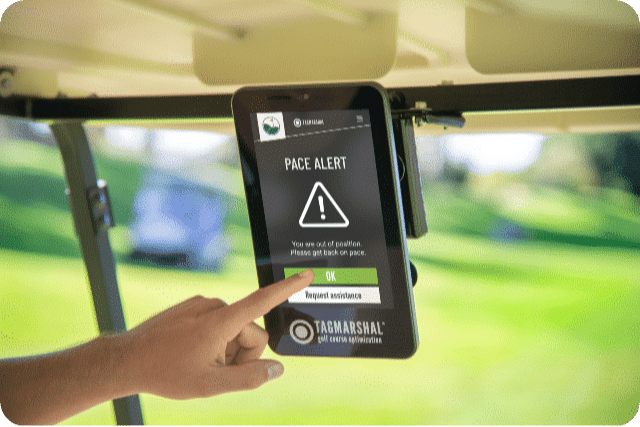
Full Aerial View: A full top-down view means players can identify where hazards like bunkers and water are. Additionally, players get exact distances to the hole, and don’t have to rely on guesswork.
WindTag for Courses: WindTag is an industry-first technology developed by Tagmarshal that gives players real-time, hyperlocal wind speed and direction on every green. The system’s powerful AI offers precise distances to pins, as well as live shot and club recommendations, which can be a major help on the quest to break 90. This technology has revolutionized how players and operators interact with and measure wind conditions.
WindTag for Driving Ranges: WindTag for driving ranges offers the same technology as above, but for driving ranges. Players going to a driving range that offers WindTag technology can use it to improve practice with real-time data.
While Tagmarshal is a tool used by operators to improve course operations, the technology also helps players make smarter decisions on the course, and can be used to reach key milestones and improve significantly.
Final Thoughts
While it may seem impossible to you now, breaking 90 is achievable for almost all golfers. All it takes is smarter play, disciplined practice, the right mindset, and the right technology. Focusing on progress is more important than trying to reach perfection, and consistency is key to getting better.
Tagmarshal can be used by players to make better decisions on the course and while on the range, highlighting where hazards are and offering exact distances to the hole. The revolutionary WindTag technology also offers players live shot and club recommendations based on wind speed and direction.
For course operators looking to take the playing experience to a new level, while also improving operations and driving more revenue, Tagmarshal is the smart choice. Get in touch to learn more, or book your demo today!
ABOUT TAGMARSHAL
Tagmarshal, the market leader in on-course optimization technology, provides courses with full, real-time operational oversight and reporting, giving golf operators the tools to manage pace and flow of play effectively, resulting in enhanced player experiences, increased efficiency through automation, and additional revenue generation.
Tagmarshal’s technology has collected over 100 billion data points from more than 95 million tracked and improved rounds of golf and has relationships with in excess of 900 partners, including Hazeltine, Whistling Straits, Baltusrol, Fieldstone, Bandon Dunes, The Old Course at St Andrews Links, Serenoa and Erin Hills.
Tagmarshal partners with several golf management groups, private, daily fee, public and resort courses, including 50 of the Top 100 courses, as well as many $40-$60 green fee courses, which are seeing excellent results using the system.
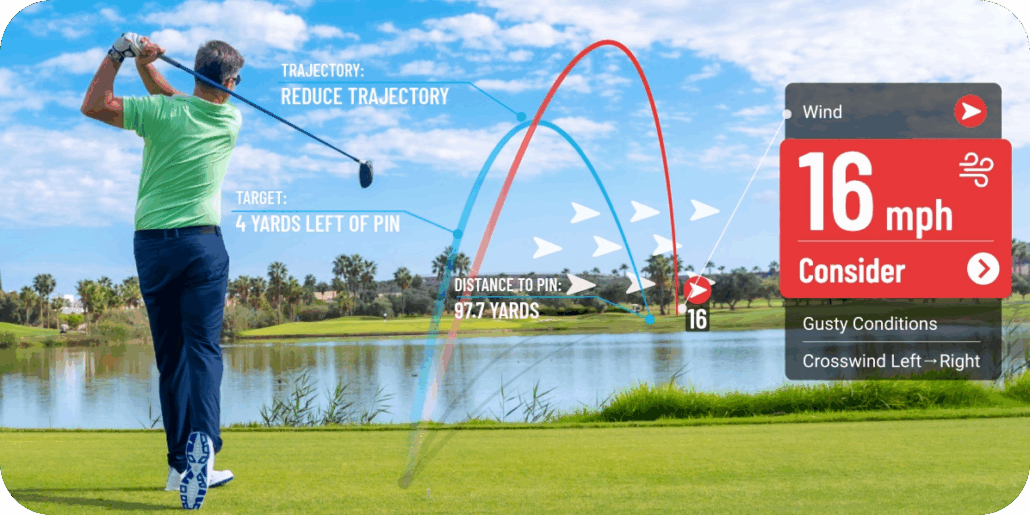
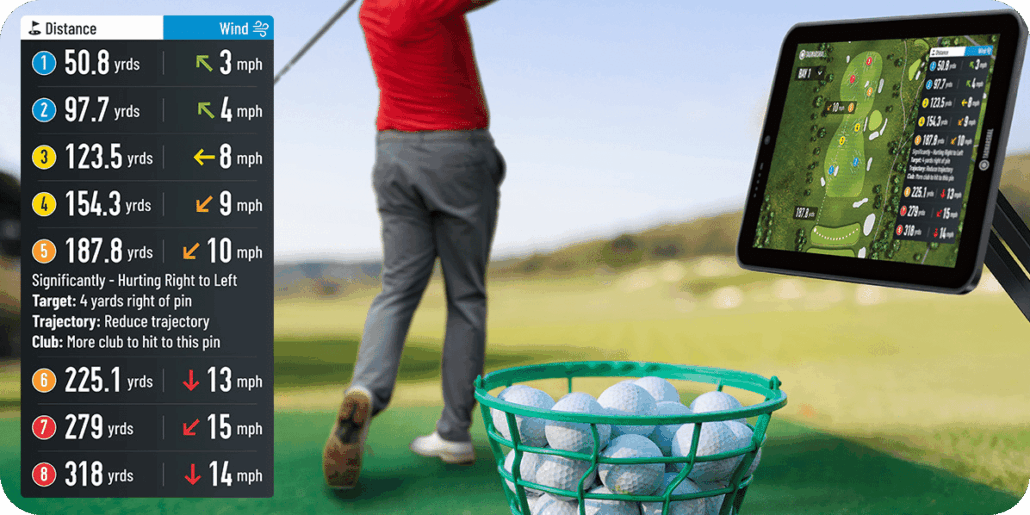
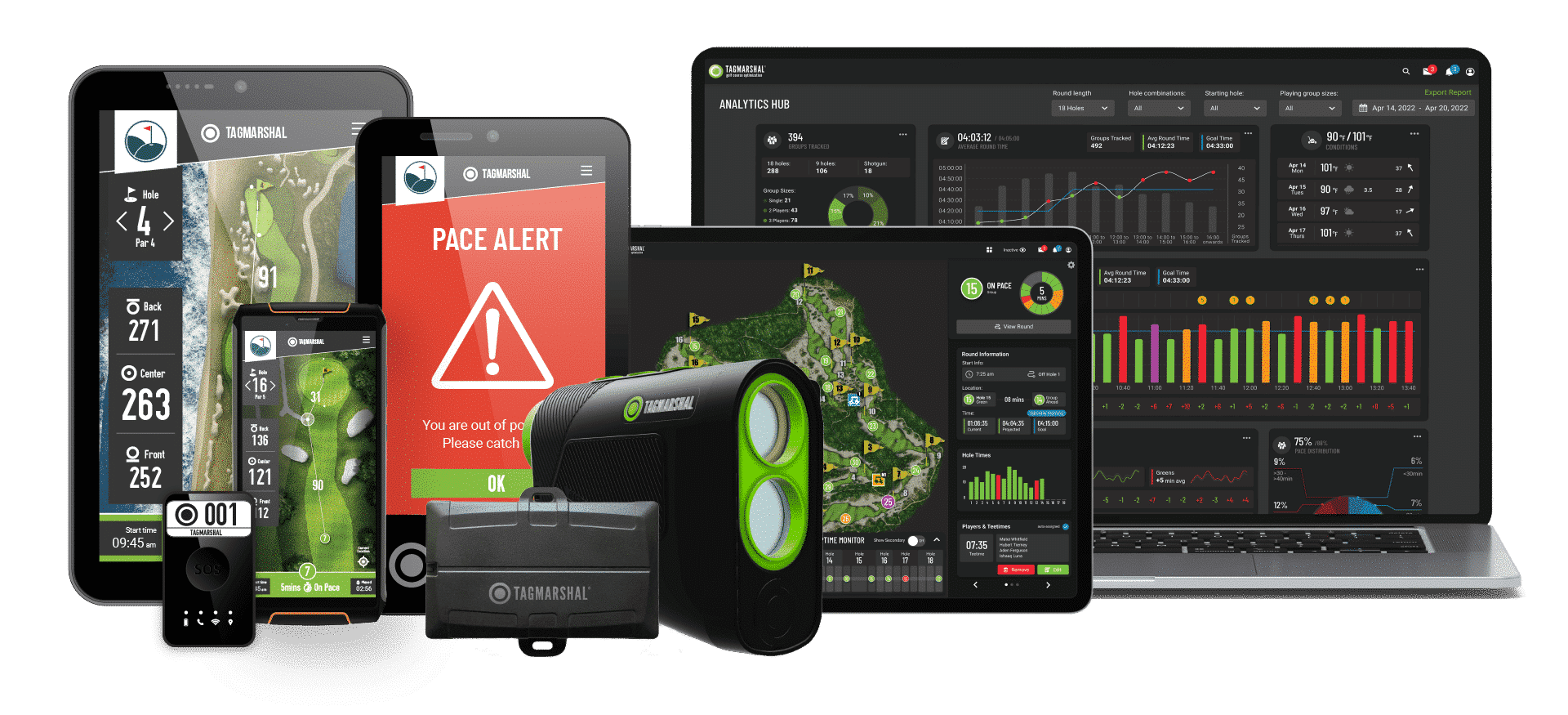
 WATCH DEMO
WATCH DEMO